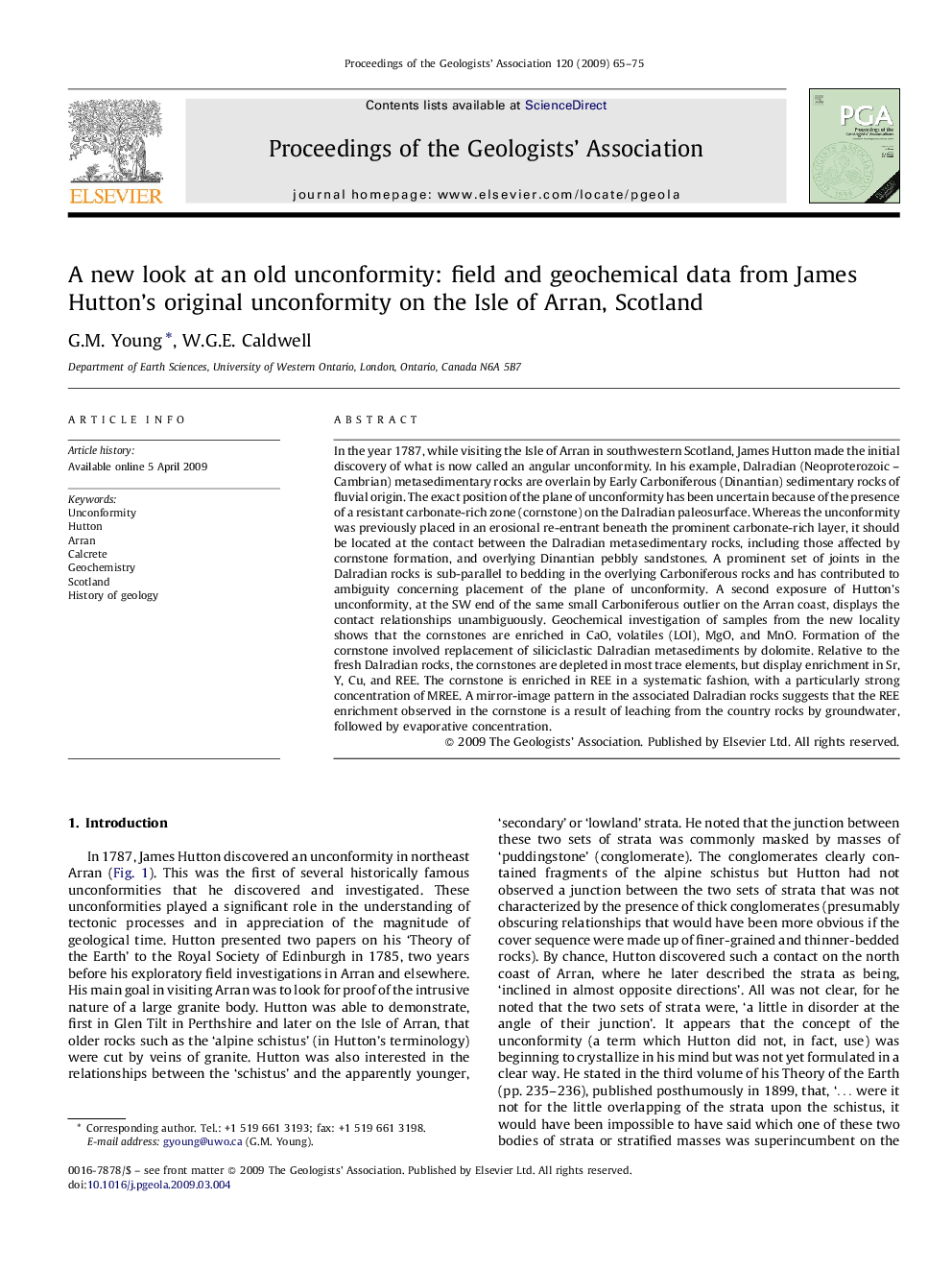| کد مقاله | کد نشریه | سال انتشار | مقاله انگلیسی | نسخه تمام متن |
|---|---|---|---|---|
| 4734912 | 1640677 | 2009 | 11 صفحه PDF | دانلود رایگان |

In the year 1787, while visiting the Isle of Arran in southwestern Scotland, James Hutton made the initial discovery of what is now called an angular unconformity. In his example, Dalradian (Neoproterozoic – Cambrian) metasedimentary rocks are overlain by Early Carboniferous (Dinantian) sedimentary rocks of fluvial origin. The exact position of the plane of unconformity has been uncertain because of the presence of a resistant carbonate-rich zone (cornstone) on the Dalradian paleosurface. Whereas the unconformity was previously placed in an erosional re-entrant beneath the prominent carbonate-rich layer, it should be located at the contact between the Dalradian metasedimentary rocks, including those affected by cornstone formation, and overlying Dinantian pebbly sandstones. A prominent set of joints in the Dalradian rocks is sub-parallel to bedding in the overlying Carboniferous rocks and has contributed to ambiguity concerning placement of the plane of unconformity. A second exposure of Hutton's unconformity, at the SW end of the same small Carboniferous outlier on the Arran coast, displays the contact relationships unambiguously. Geochemical investigation of samples from the new locality shows that the cornstones are enriched in CaO, volatiles (LOI), MgO, and MnO. Formation of the cornstone involved replacement of siliciclastic Dalradian metasediments by dolomite. Relative to the fresh Dalradian rocks, the cornstones are depleted in most trace elements, but display enrichment in Sr, Y, Cu, and REE. The cornstone is enriched in REE in a systematic fashion, with a particularly strong concentration of MREE. A mirror-image pattern in the associated Dalradian rocks suggests that the REE enrichment observed in the cornstone is a result of leaching from the country rocks by groundwater, followed by evaporative concentration.
Journal: Proceedings of the Geologists' Association - Volume 120, Issue 1, 2009, Pages 65–75